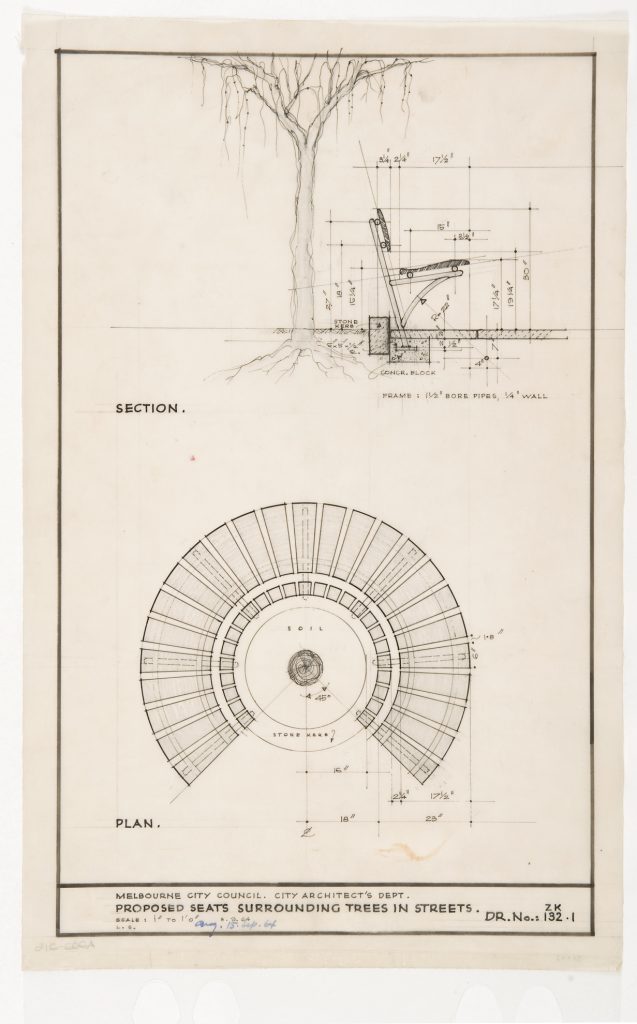Proposed seats surrounding trees in streets, City of Melbourne, Architects office, drawing
Summary
The predecessor of City of Melbourne's City Design Studio was the City Architect's Office, an administrative model adopted from Britain. The Art and Heritage Collection holds a suite of technical drawings created in that office between the 1940s and 1970s, drawings that propose various designs to support public use of the city streets. They include plans for park and street seating, vendor kiosks, hand railing, gates, bus shelters, planter boxes and street lights.
While the philosophy currently framing the city's approach to industrial design is orientated towards an aesthetic that draws our public spaces into a single design vocabulary, consistency appears less of a concern in the period that these drawings pertain to. While there is some consistency within an area, the drawings suggest the municipality tolerated a level of variation.
Since the early 1990s, fabrication of city designs has been outsourced to independent local companies. But during this period, street furniture was manufactured in the city's North Melbourne workshop. Here the staff were highly skilled workers in carpentry and steel fabrication.
Take the drawings of elegant solutions to public seating under the canopies of street trees. Made in 1964–65, three technical drawings, of which this is one, propose seating curving around the trunk of the tree, with each piece of bench's timber individually crafted by city carpenters to provide for a gently-shaped and comfortable place to plant one's weary body. The seats may have offered a place of rest but they also acted as a guard against tripping over determined tree roots that inevitably push up to warp and fold the surface of the pavement. Two of these drawings show a stone curb encircling the trunk and one a depression around the tree's circumference; both variations document a means for capturing rainwater run-off and for manually watering the trees, essential natural amenities to city spaces.
